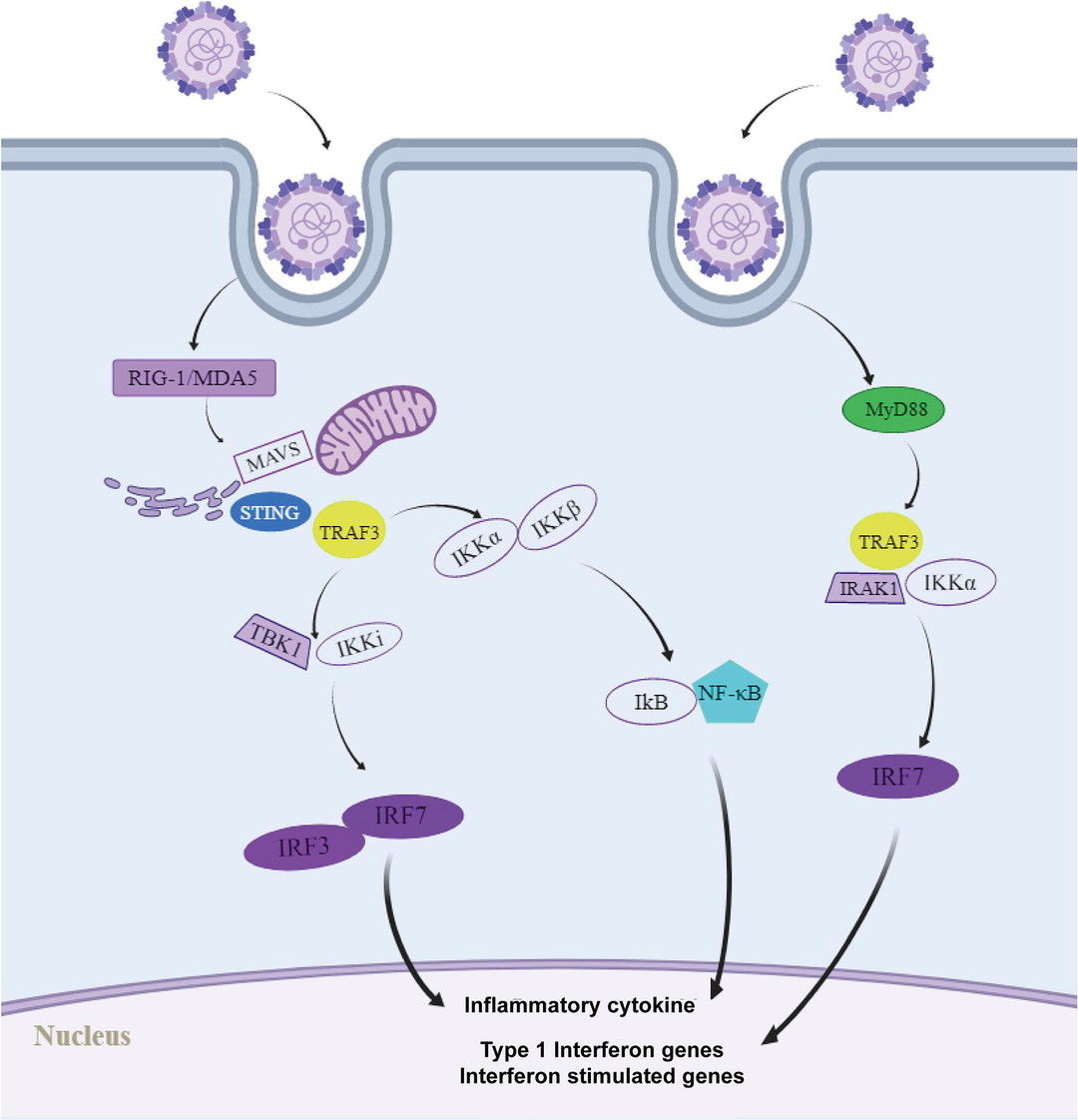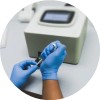Enteroviruses cause a range of illnesses, from mild infections to severe neurologic and systemic diseases, requiring accurate and timely diagnosis. This resource discusses the clinical suspicion of enterovirus infection, traditional diagnostic approaches, and molecular diagnostics to facilitate accurate diagnosis and effective management of this challenging disease.
Introduction to Enterovirus Infection
Enteroviruses (EVs), comprising over 100 serotypes including coxsackieviruses and echoviruses, are highly prevalent RNA viruses causing a spectrum of diseases ranging from mild hand-foot-mouth disease (HFMD) to severe meningitis, neonatal sepsis, and acute flaccid paralysis. Primarily affecting children, EVs exhibit seasonal peaks (summer/fall) and present diagnostic challenges due to their non-specific early symptoms (fever, rash) overlapping with other infections.
 Fig.1 The molecular mechanisms of the immune response to enterovirus (EV) infection. (Wang, Congcong, et al., 2023)
Fig.1 The molecular mechanisms of the immune response to enterovirus (EV) infection. (Wang, Congcong, et al., 2023)
Clinical Suspicion of Enterovirus Infection
Enterovirus (EV) infections should be suspected based on syndrome-specific presentations, seasonal trends, and patient demographics. Given the lack of pathognomonic features, clinical suspicion often guides initial testing and management.
Clinical Manifestations
Enterovirus infections present with diverse symptoms ranging from mild febrile illness to severe systemic disease. Classic pediatric syndromes like herpangina (throat ulcers) and acute flaccid paralysis (limb weakness) are strongly suggestive, while adults may exhibit pleurodynia (sudden chest pain) or nonspecific viral exanthems. Seasonal patterns (summer/fall) and age-specific risks (e.g., neonates) further refine clinical suspicion.
Differential Diagnosis
Enterovirus symptoms overlap with bacterial infections (e.g., meningococcal meningitis), other viruses (HSV in neonates, parechovirus in infants), and non-infectious causes (drug reactions mimicking rash). Distinguishing features include:
- HFMD vs. HSV gingivostomatitis: HSV ulcers typically affect gums/anterior mouth.
- EV meningitis vs. bacterial meningitis: EV lacks petechiae or rapid deterioration.
- EV-D68 AFP vs. polio: Rapid PCR testing clarifies etiology.
Traditional Diagnostic Methods forEnterovirus Infection
Traditional diagnostic approaches for enterovirus (EV) infections have historically relied on viral culture and serology, which provided foundational insights but face significant limitations in speed, sensitivity, and practicality. While these methods remain relevant for research or retrospective analysis, they have largely been supplanted by molecular techniques in clinical practice.
| Feature |
Viral Culture |
Serological Testing |
| Target |
Live virus isolation |
Virus-specific antibodies (IgM/IgG) |
| Sample Types |
Stool, CSF, throat swabs |
Serum/plasma |
| Turnaround Time |
5–10 days |
1–3 days |
| Sensitivity |
Low (≤65%, varies by sample) |
Variable (serotype-dependent) |
| Specificity |
High (if CPE observed) |
Moderate (cross-reactivity risks) |
| Serotyping |
Yes (via neutralization assays) |
No (limited to targeted serotypes) |
| Clinical Utility |
Outbreak typing/research |
Retrospective diagnosis/vaccine studies |
| Key Limitation |
Slow, requires viable virus |
Poor acute-phase utility |
Molecular Diagnostics for Enterovirus Infection
Molecular diagnostics have revolutionized enterovirus (EV) detection, offering rapid, sensitive, and specific identification compared to traditional methods. These techniques are now the gold standard for diagnosing EV infections, particularly in severe or atypical cases.
Reverse Transcription PCR (RT-PCR)
RT-PCR is the gold standard for enterovirus detection, amplifying viral RNA from CSF, stool, or respiratory samples with >95% sensitivity in 2-6 hours. It targets conserved regions (5'-UTR) for pan-enterovirus screening or VP1 for serotyping, enabling rapid diagnosis of meningitis/sepsis while avoiding unnecessary antibiotics.
Multiplex PCR Panels
These panels simultaneously detect enteroviruses alongside other pathogens (e.g., HSV, parechovirus) in syndromes like meningitis or respiratory infections. Ideal for differential diagnosis, they streamline testing with single-sample workflows while maintaining high specificity through target-specific probes.
Real-Time Quantitative PCR (qPCR)
qPCR quantifies enterovirus RNA load, providing prognostic insights (e.g., high CSF viral loads correlate with prolonged meningitis). Its precision supports monitoring of severe cases and research applications, though interpretation requires context of sample type and timing.
Challenges and Future of Enterovirus Infection Diagnostics
Despite advances in molecular techniques, enterovirus (EV) diagnostics face challenges including serotype diversity (>100 strains complicating assay design), sample-type variability (e.g., low CSF viral loads in meningitis), and limited point-of-care options for resource-limited settings. Future solutions aim to integrate rapid POC detection, AI-powered metagenomics for unbiased pathogen screening, and affordable multiplex platforms to enable global, real-time outbreak response, bridging gaps in speed, accessibility, and serotype coverage.
As a leading provider of infectious disease IVD solutions, Alta DiagnoTech offers a comprehensive portfolio for enterovirus infection diagnostics, including rapid PCR assay kits, multiplex testing panels, precise genotyping kits, and POCT solutions to support accurate clinical decision-making and public health surveillance. If you have related needs, please feel free to contact us for more information or product support.
Reference
- Wang, Congcong, et al. "Pathogenesis of enterovirus infection in central nervous system." Biosafety and Health. 5.04 (2023): 233-239.
This article is for research use only. Do not use in any diagnostic or therapeutic application.



 Fig.1 The molecular mechanisms of the immune response to enterovirus (EV) infection. (Wang, Congcong, et al., 2023)
Fig.1 The molecular mechanisms of the immune response to enterovirus (EV) infection. (Wang, Congcong, et al., 2023)



